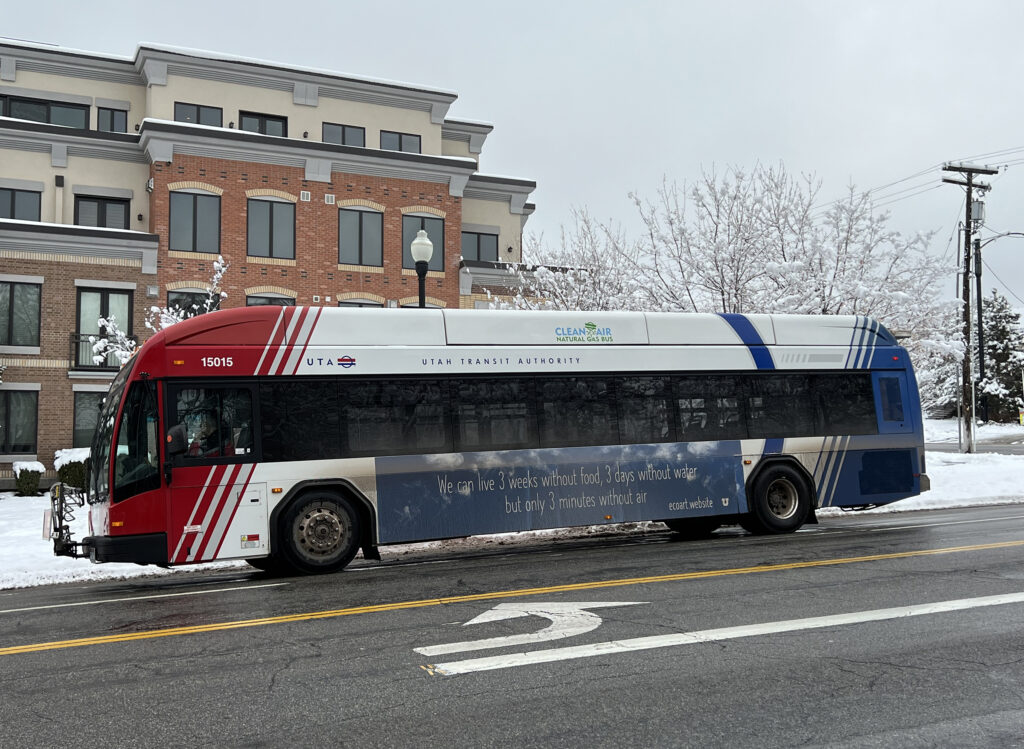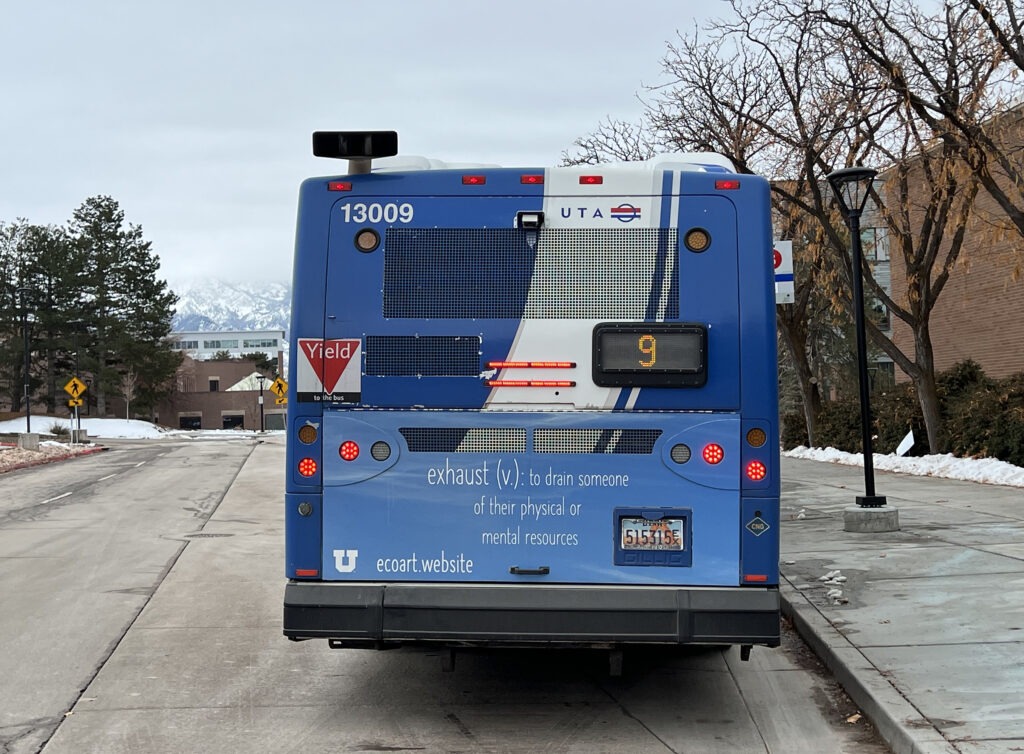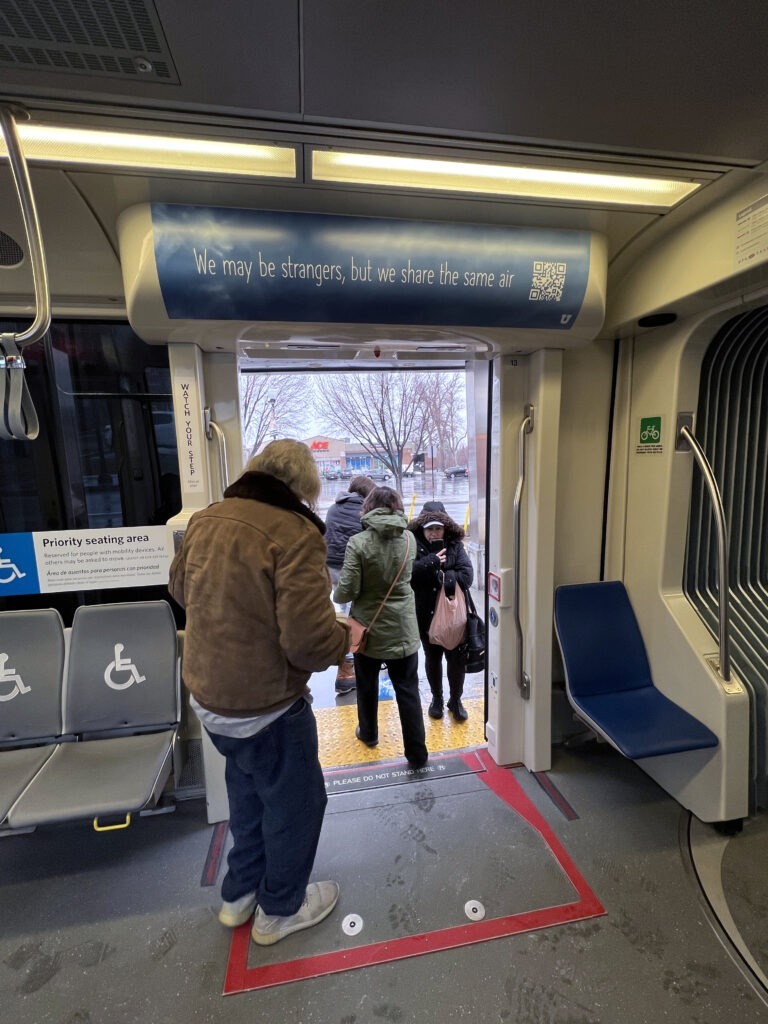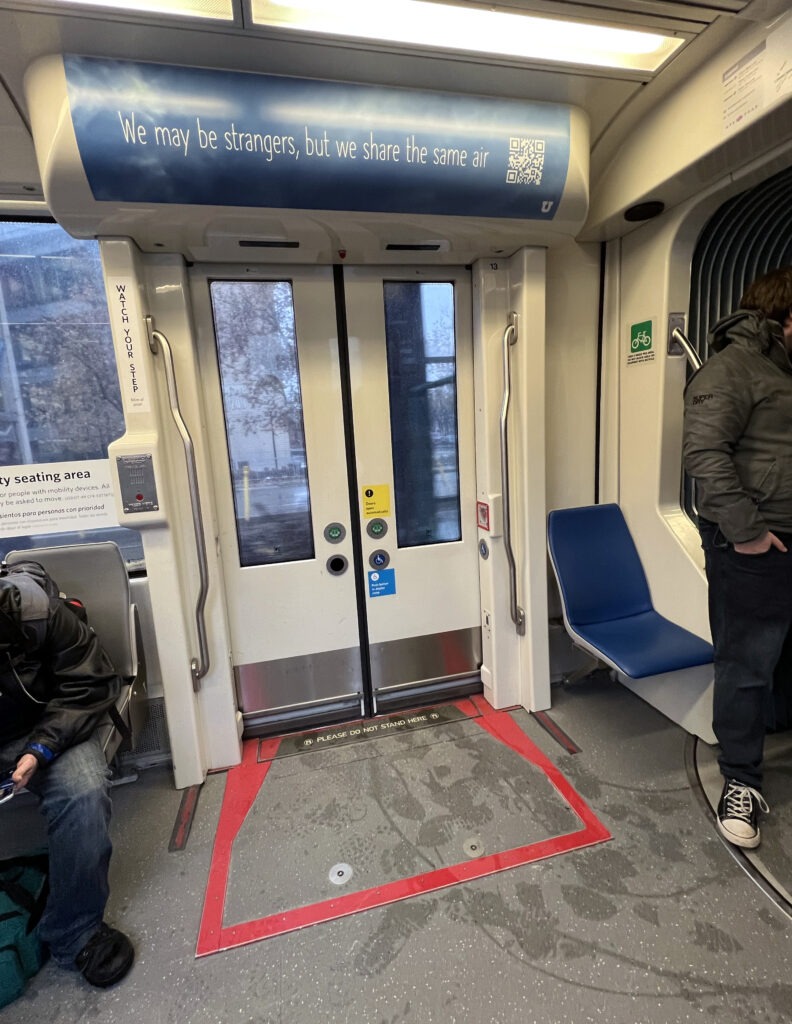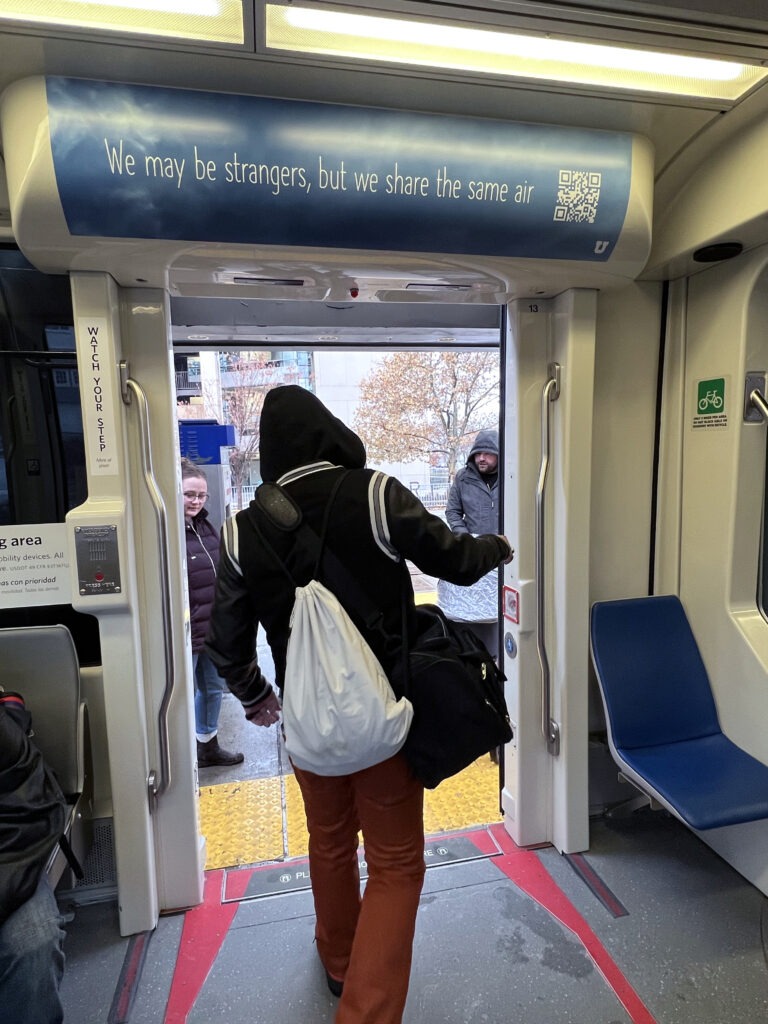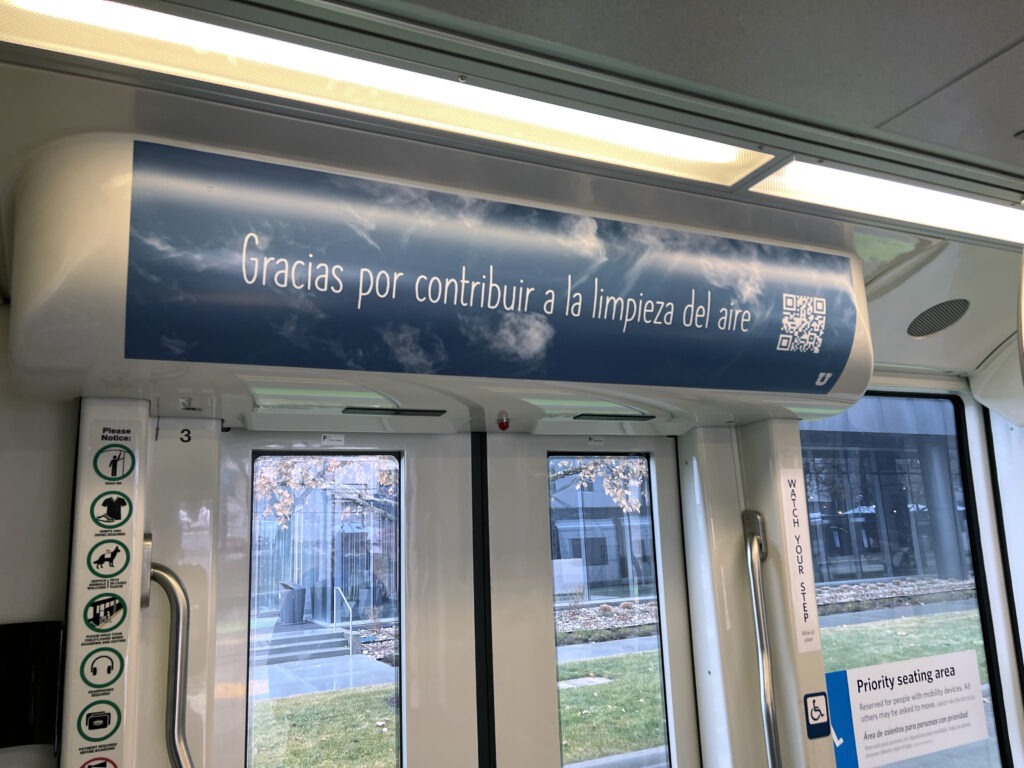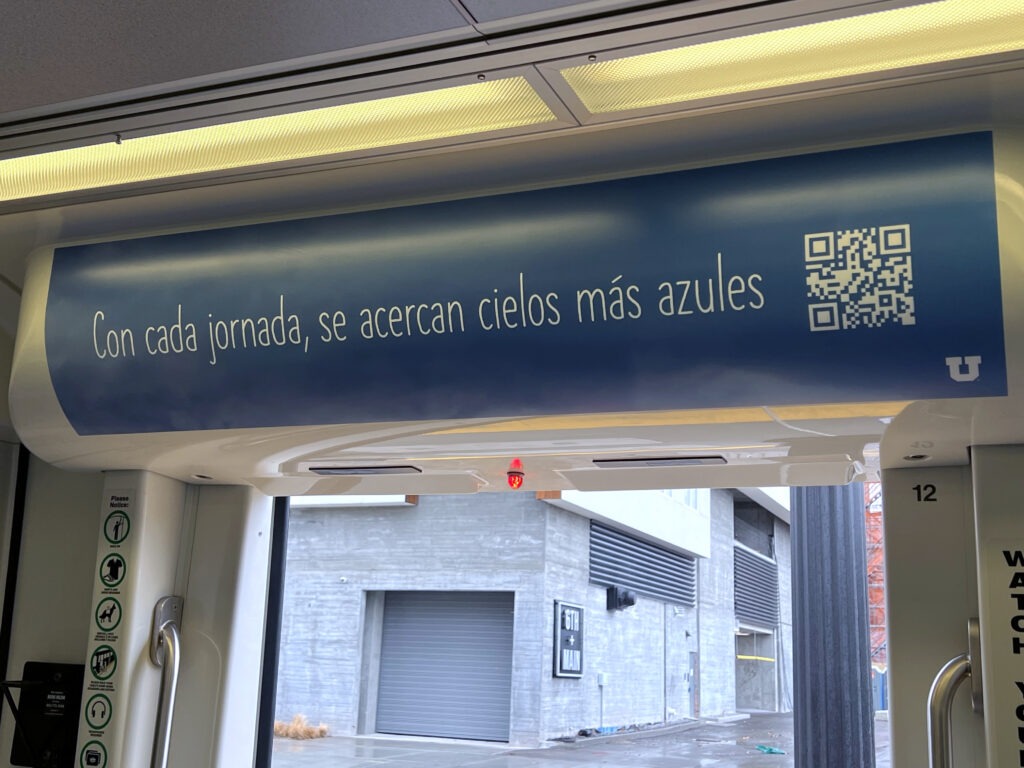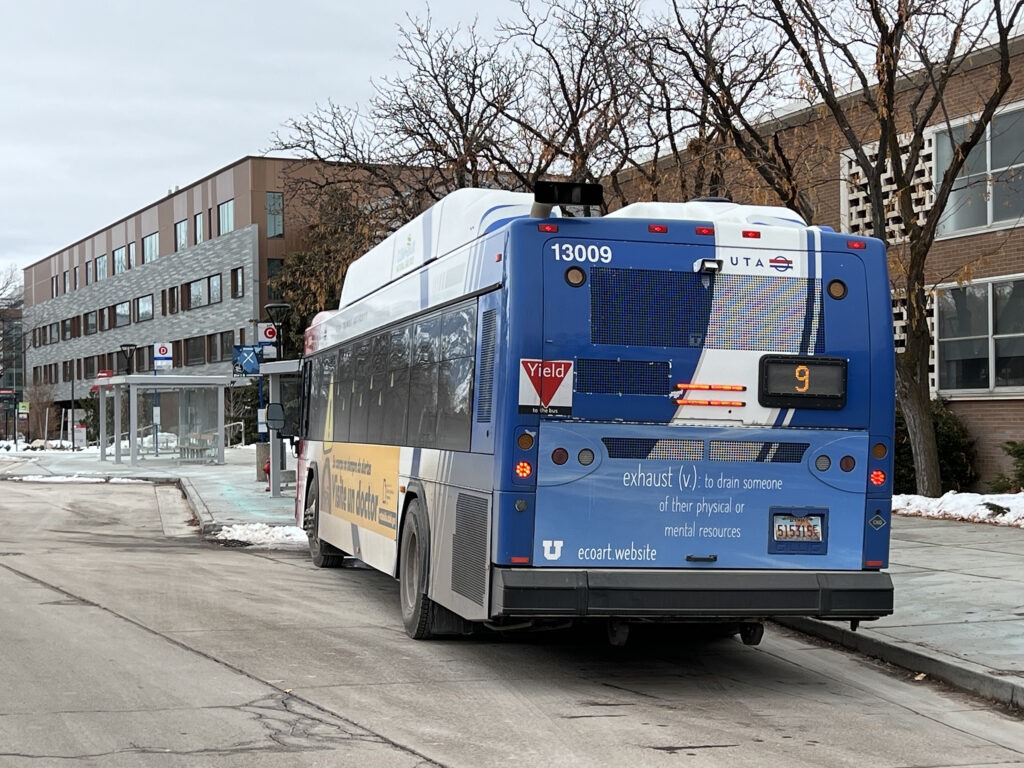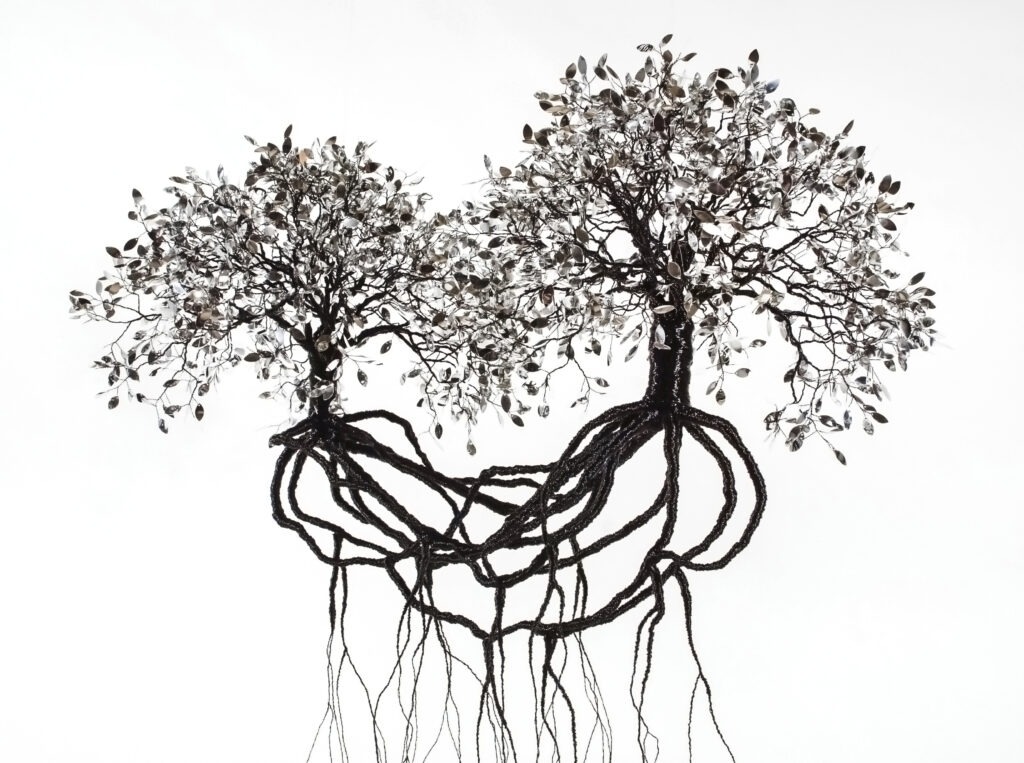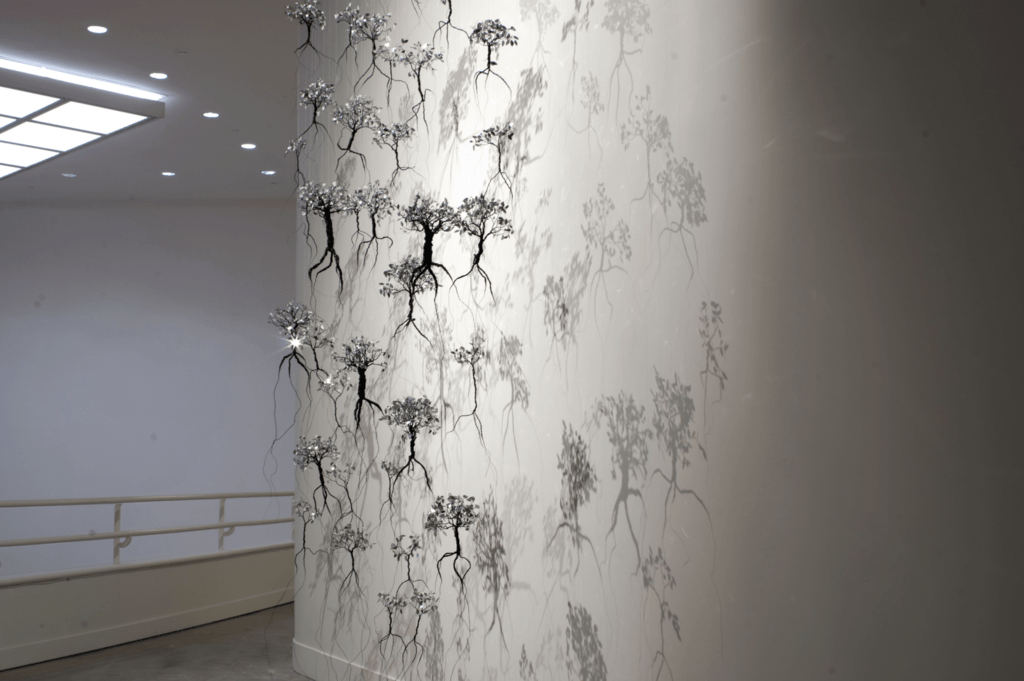
Keep an eye out for Associate Professor Wendy Wischer's new public artwork on UTA buses and TRAX throughout the Salt Lake Valley for the month of January!
In Search of Blue Sky is a temporary public artwork by artist Wendy Wischer, in collaboration with Atmospheric Scientist John Lin and Poet Lindsey Webb. This collaboration uses air quality data collected as part of the Wasatch Environmental Observatory (WEO) to personally connect the community and UTA riders to the experience of data collection along with their personal contributions, all while inspiring curiosity to dive deeper into the changing air quality and ways we might work together to achieve the blue skies we all value. Images to the signs and text can be found on the ecoart website.
The artists will use the unique communication of visual art to engage members of the public through a focus on common ground — blue skies and clean air — and connect them to air quality information collected as part of mobile platforms on the Utah Transit Authority—TRAX and electric buses.
Through their art, they will communicate this data to the general community through telling simple, and provocative statements about air and atmosphere, while at the same time, thanking those who take public transportation and acknowledging their personal contributions towards cleaner air.
This text-based artwork will exist on exterior bus signs and interior TRAX rail car signs in the Salt Lake City Area. These signs will have a URL or QR code that links to an ecoart website, which provides an introduction and access to the real-time data that is collected through WEO – possibly on the very TRAX car or bus that they are riding in. Easy links to the MesoWest Utah Air Quality Observations website provides the viewers, and riders, access to the current air quality in the Salt Lake Valley. This data is constantly changing so each time they click on the link, they have access to new information based on the WEO data collected for that day, at that time, in that location.
The Team:
Wendy Wischer, GCSC Faculty Affiliate, Associate Professor of Sculpture Intermedia in the Art & Art History Department in the College of Fine Arts.
John Lin, GCSC Faculty Affiliate, Associate Director of the Wilkes Center for Climate Science and Policy, and Professor in the Department of Atmospheric Sciences in the College of Mines and Earth Sciences.
Lindsey Webb, PhD student in Creative Writing in the English Department in the College of Humanities.
WHERE: Circulating throughout the Salt Lake Valley on multiple busses and TRAX rail cars.
WHEN: The signs will be installed on the exterior buses and interior TRAX rail cars January 1st and run through January 28th, 2023. The ecoart website and the MesoWest Utah Air Quality Observations website will remain accessible after the signs come down.
This project was generously funded by the Global Change and Sustainability Center, the Society, Water and Climate Research Group, and Nexus: Interdisciplinary Exchange for Utah Science at the University of Utah.
Read more about the project in the SLUG Magazine article!
Wischer also recently opened an exhibition at the Art Kiosk in Redwood City, CA. Rooted consists of two sculptural works from a series of trees, made of black wire and mirrored mylar leaves, that explore the human psyche while referencing the relationships trees have with each other.
Entwined is a sculpture of two trees connected together at the roots in an intricate entanglement. These two are bound together in a beautiful, and at times, chaotic dance. The roots hang down and extend out on the floor, now transformed and no longer need to be firmly planted in the ground. They reference free moving tentacles similar to aquatic beings with the ability to roam.
Woven is a continuation of a series of floating forests that transform and form to the different spaces they inhabit. Inspired by Rhizomes and mythical landscapes, Woven utilizes the wall and becomes almost a tapestry of branches and roots hanging in front of it. Through the use of light, the forest extends beyond the physical realm of the trees themselves and occupies the shadows. Thoughts and memories, experiences and environments continuously appear and reappear in overlapping fragments.
